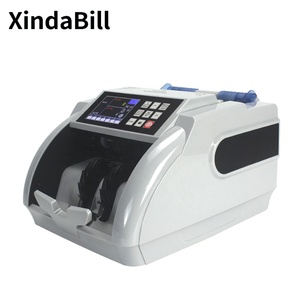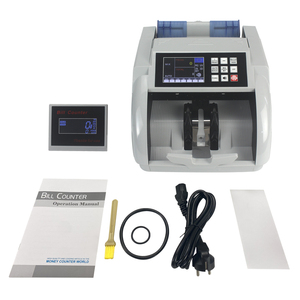(92 products available)






















































































































































































































































Professional sheet counting machines are industrial-grade counting devices used to accurately count and verify large volumes of sheets, typically made of paper or cardboard. They deliver precise counting results, which are crucial for businesses that require an exact tally of sheets. Examples include print shops, papermaking factories, and packaging companies. Customization options are available for different automation.
Professional sheet counting machines come in various types, each with distinct features and benefits suited for different applications and automation requirements.
The essentials to consider when looking at the specifications of a sheet counting machine are its feeding mechanism and counting accuracy. Depending on the complexity of the machine and the volume of sheets one needs to count, the device may have a simple manual tally button or an electronic display. Advanced models may even be equipped with an automated digital display of counted sheets. The intensity and precision of the sheet counter's sensors govern its counting accuracy. Generally, they can count sheets with an accuracy of 99% to 100%.
Industrial sheet counting machines have different capabilities regarding the maximum number of sheets they can count in one go, as well as the speed at which they can count. Most machines can count sheets ranging from paper to plywood, and some specialize in counting thicker boards, such as those used in construction. The counting speed also differs from machine to machine, and while some may only count at a few sheets per minute, industrial machines can count thousands of sheets in one minute.
It's crucial to maintain a sheet counter machine periodically since it usually plays an essential role in streamlining processes. Depending on the usage of the machine, it should be cleaned weekly and lubricated on a monthly basis. More frequent cleaning and less frequent lubrication is ideal if the machine is exposed to dust and debris, which may scratch its rollers or damage its sensors. Wipe all counters with a microfiber cloth to remove dust, and ensure all electrical components are dry before operating the machine. While applying lubricants to moving parts of the machine, ensure they are moisture and debris-free. It's also a good idea to consult the manual and refer to any specific maintenance requirements of the machine model one may have.
More advanced machine models like the automated large-scale industrial ones may need more detailed maintenance, such as calibrating the sensors and ensuring their accuracy. It’s always good to have industrial machines checked and their parts serviced by an expert to ensure their smooth and uninterrupted counting function.
The professional sheet counting machines have multiple uses across industries. Any industry dealing with paper, currency, tickets, labels, cards, and food products can benefit from the machine. Here are some uses of sheet counting machines:
When it comes to knowing how to choose a paper counting machine, the features are the most important thing to look at. Buyers can look closely at specific features and decide based on what their needs are. This kind of decision-making process is pretty simple as it makes it easier to figure out what works and counts.
First of all, the sheet counting device's capacity and speed are two crucial features people look at when choosing what kind of machine works for them. How quickly a machine counts and how much it can count in one sitting are usually very important when factoring in the efficiency of a system. Some businesses look for machines that can handle up to thousands of sheets in a single count to reduce the amount of time offsetting would take.
Secondly, how flexible the machine is would determine whether or not people go for a specific type. A sheet counter that can handle all sorts of paper types, sizes, and thicknesses would be preferred as opposed to one with rigid specifications. Thirdly, the counting technology of the machine is also very essential. Businesses would usually prefer machines that offer a high level of accuracy and automatic functionalities.
Fourth, buyers would also want to look at how user-friendly the machine is. A device with a simple interface and easy-to-understand instructions would be preferred to a complicated one that is hard to use. Fifth, it is important to consider the durability and build of the material used in the machine. Buyers often go for sheet counters made with high-quality material so as to withstand heavy use. The last thing buyers want is a machine that breaks down easily.
Finally, buyers would also go for machines that are easy to integrate into existing workflows and systems in the workplace. If a machine cannot integrate seamlessly into systems already in place, there is no point in getting it as it will only cause more issues and work. Overall, it is very important to consider the maintenance and service support a particular machine offers when choosing a sheet counter. Some machines require a lot of costly maintenance and horrible customer service support.
Q1: What types of sheets can a counting machine accommodate?
A1: A sheet counting machine can accommodate various types of sheets, including paper sheets, cardboard sheets, plastic sheets, and other flat materials.
Q2: Can a sheet counting machine be customized to count specific types of sheets?
A2: Yes, many sheet counting machines can be customized with specific sensors, feeders, or configurations to count particular kinds of sheets or materials.
Q3: Is it possible to integrate a sheet counting machine into an existing production line?
A3: Yes, sheet counting machines can often be integrated into existing production lines or systems with other machinery to create automated counting and sorting solutions.
Q4: What is the difference between manual and automated sheet counting machines?
A4: Manual sheet counting machines require operators to manually input the counted sheets, while automated machines automatically count the sheets without manual intervention.